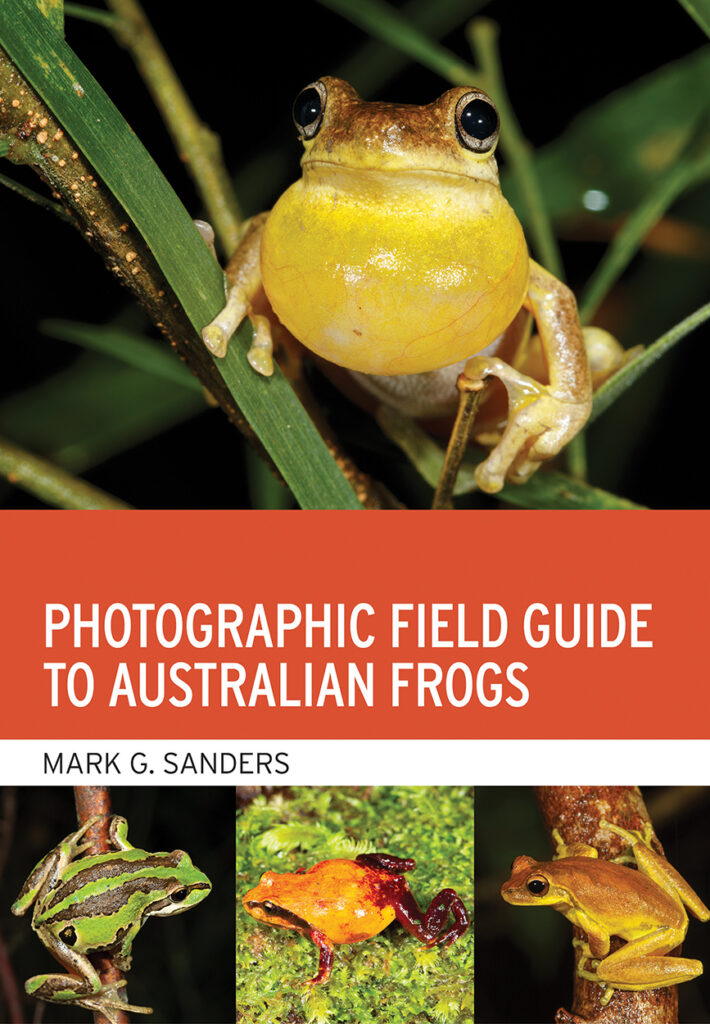
Paperback | June 2021 | $ 49.99
ISBN: 9781486313259 | 376 pages | 245 x 170 mm
Publisher: CSIRO Publishing
Colour photographs, Illustrations, Maps
ePDF | June 2021
ISBN: 9781486313266
Publisher: CSIRO Publishing
Available from eRetailers
ePUB | June 2021
ISBN: 9781486313273
Publisher: CSIRO Publishing
Available from eRetailers
The Photographic Field Guide to Australian Frogs has to be one of the nicest field guides to use that cover all of our known Australian species. It’s a recent release, published this year by Mark G. Sanders, the Queensland naturalist and passionate photographer. It is well illustrated with good, in focus shots of all the profiled species.
The introduction is well written and nicely detailed, profiling classification and names, frog conservation, finding frogs, morphology, hygiene, calls and distribution. The notes on these subjects are extensive but not dense, making essential and useful reading to any budding herpetologist. In the main body of the book there are profiles of all our remaining native species. The distribution maps are marked with dots on all the records, so as to make then even more accurate. They are also quite large and easy to use. All the photos also had a location on them, which is quite handy to know individual locations that the species is found at. Also, most of the frogs have more than one photo, to show the variations and difference between genders (in the sexually dimorphic species). Also, given that it was published this year it is the most current guide to all of Australia’s frogs.
On the downside, the notes on the general biology of the species is generally not explored in depth, making it slightly harder to get a good understanding about the sort of life strategies that the frogs employ.
I really liked that the habitat and emergence/activity times were included, as this makes it a lot easier to get a good idea of when and where you are likely to find them. Also, the descriptions of the calls are quite a good idea, even though it is hard to get a good idea of what they actually sound like from a written description.
I recommend this book highly to anyone with an interest in frogs, whether you are budding novices in frogs or fully qualified herpetologist, this is the book for you.
Charles Porter

